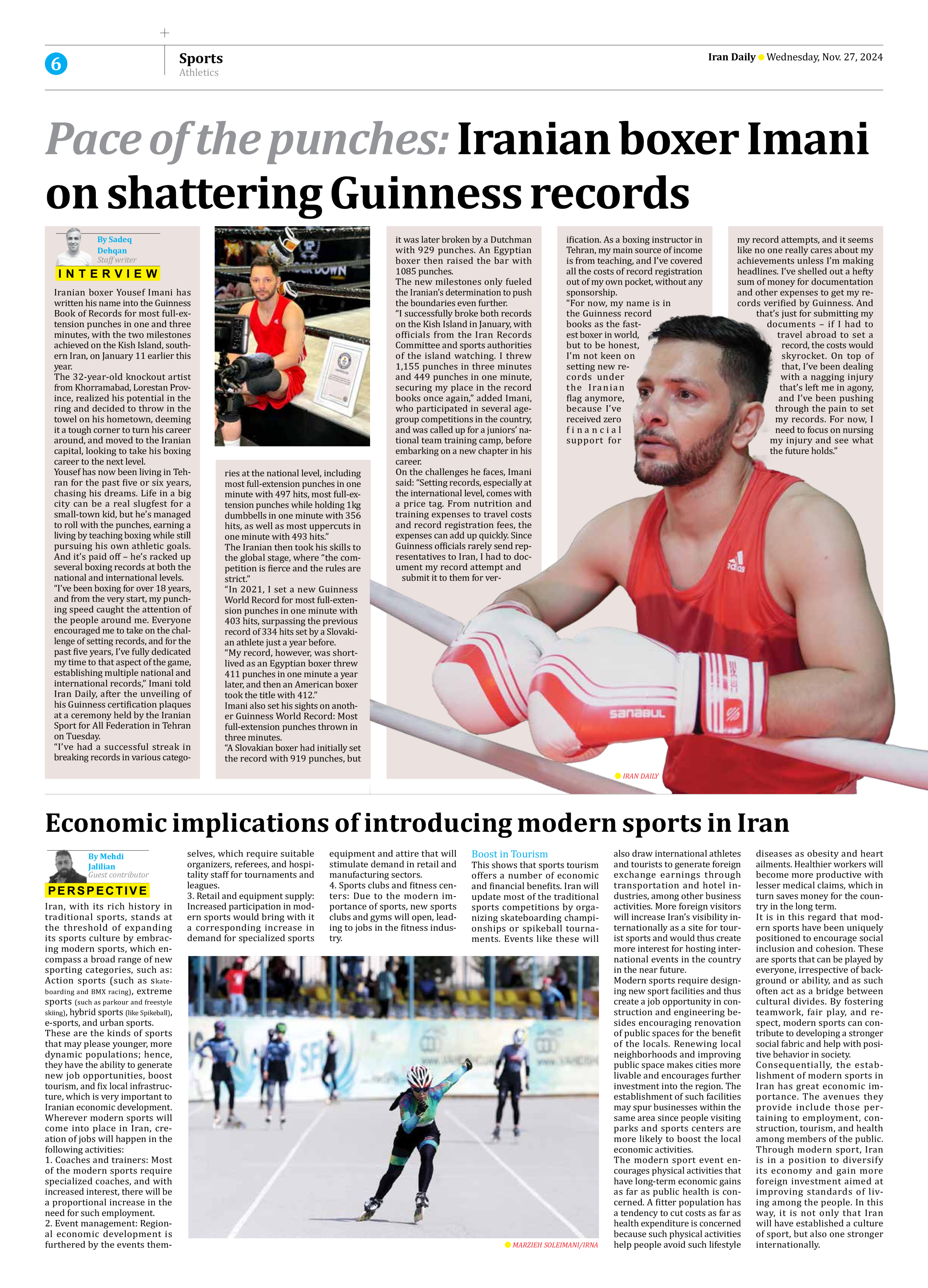
Economic implications of introducing modern sports in Iran
By Mehdi
Jalilian
Guest contributor
Iran, with its rich history in traditional sports, stands at the threshold of expanding its sports culture by embracing modern sports, which encompass a broad range of new sporting categories, such as: Action sports (such as skateboarding and BMX racing), extreme sports (such as parkour and freestyle skiing), hybrid sports (like Spikeball), e-sports, and urban sports.
These are the kinds of sports that may please younger, more dynamic populations; hence, they have the ability to generate new job opportunities, boost tourism, and fix local infrastructure, which is very important to Iranian economic development. Wherever modern sports will come into place in Iran, creation of jobs will happen in the following activities:
1. Coaches and trainers: Most of the modern sports require specialized coaches, and with increased interest, there will be a proportional increase in the need for such employment.
2. Event management: Regional economic development is furthered by the events themselves, which require suitable organizers, referees, and hospitality staff for tournaments and leagues.
3. Retail and equipment supply: Increased participation in modern sports would bring with it a corresponding increase in demand for specialized sports equipment and attire that will stimulate demand in retail and manufacturing sectors.
4. Sports clubs and fitness centers: Due to the modern importance of sports, new sports clubs and gyms will open, leading to jobs in the fitness industry.
Boost in Tourism
This shows that sports tourism offers a number of economic and financial benefits. Iran will update most of the traditional sports competitions by organizing skateboarding championships or spikeball tournaments. Events like these will also draw international athletes and tourists to generate foreign exchange earnings through transportation and hotel industries, among other business activities. More foreign visitors will increase Iran’s visibility internationally as a site for tourist sports and would thus create more interest for hosting international events in the country in the near future.
Modern sports require designing new sport facilities and thus create a job opportunity in construction and engineering besides encouraging renovation of public spaces for the benefit of the locals. Renewing local neighborhoods and improving public space makes cities more livable and encourages further investment into the region. The establishment of such facilities may spur businesses within the same area since people visiting parks and sports centers are more likely to boost the local economic activities.
The modern sport event encourages physical activities that have long-term economic gains as far as public health is concerned. A fitter population has a tendency to cut costs as far as health expenditure is concerned because such physical activities help people avoid such lifestyle diseases as obesity and heart ailments. Healthier workers will become more productive with lesser medical claims, which in turn saves money for the country in the long term.
It is in this regard that modern sports have been uniquely positioned to encourage social inclusion and cohesion. These are sports that can be played by everyone, irrespective of background or ability, and as such often act as a bridge between cultural divides. By fostering teamwork, fair play, and respect, modern sports can contribute to developing a stronger social fabric and help with positive behavior in society.
Consequentially, the establishment of modern sports in Iran has great economic importance. The avenues they provide include those pertaining to employment, construction, tourism, and health among members of the public. Through modern sport, Iran is in a position to diversify its economy and gain more foreign investment aimed at improving standards of living among the people. In this way, it is not only that Iran will have established a culture of sport, but also one stronger internationally.







